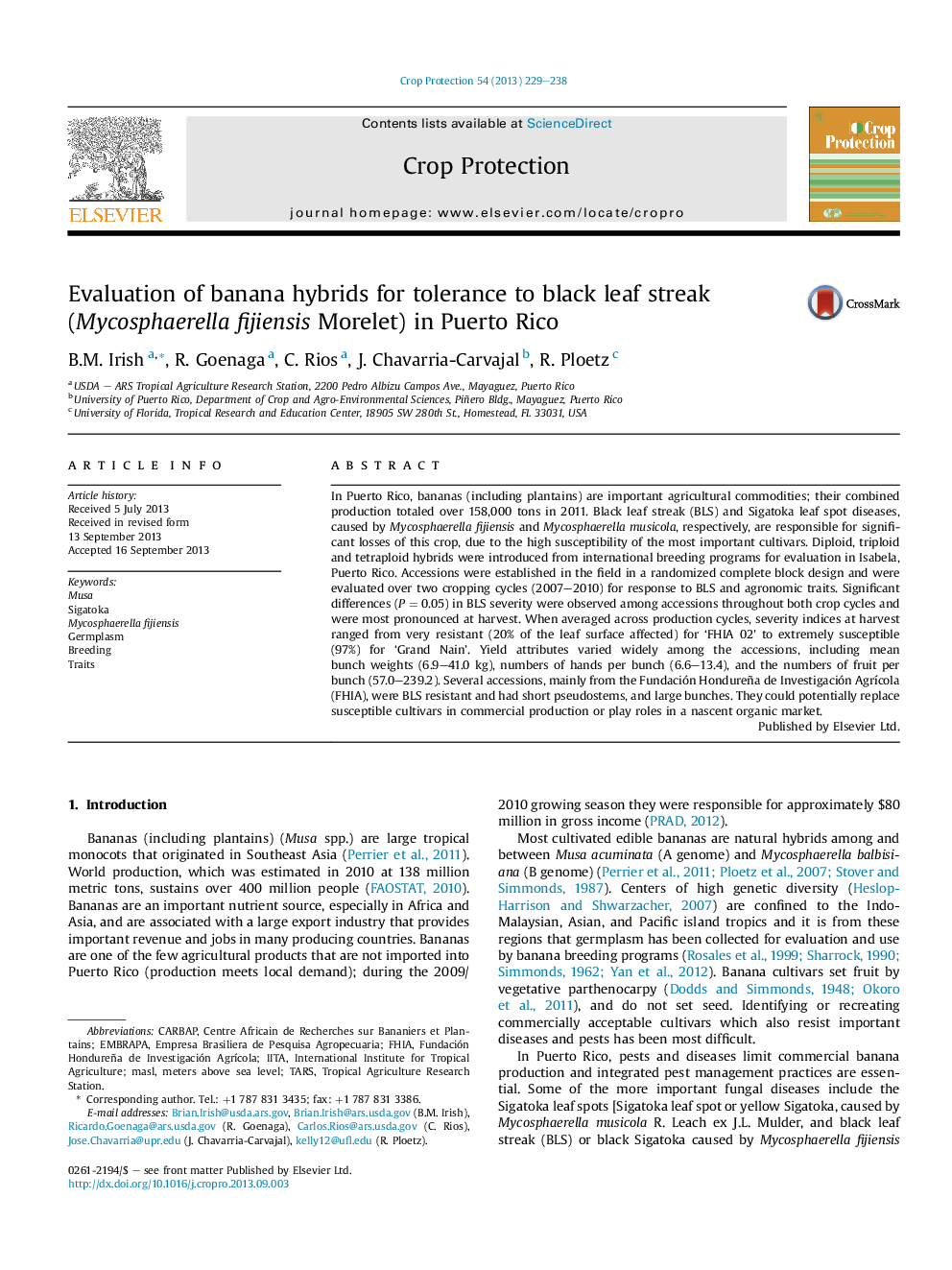| Article ID | Journal | Published Year | Pages | File Type |
|---|---|---|---|---|
| 6373829 | Crop Protection | 2013 | 10 Pages |
Abstract
In Puerto Rico, bananas (including plantains) are important agricultural commodities; their combined production totaled over 158,000 tons in 2011. Black leaf streak (BLS) and Sigatoka leaf spot diseases, caused by Mycosphaerella fijiensis and Mycosphaerella musicola, respectively, are responsible for significant losses of this crop, due to the high susceptibility of the most important cultivars. Diploid, triploid and tetraploid hybrids were introduced from international breeding programs for evaluation in Isabela, Puerto Rico. Accessions were established in the field in a randomized complete block design and were evaluated over two cropping cycles (2007-2010) for response to BLS and agronomic traits. Significant differences (P = 0.05) in BLS severity were observed among accessions throughout both crop cycles and were most pronounced at harvest. When averaged across production cycles, severity indices at harvest ranged from very resistant (20% of the leaf surface affected) for 'FHIA 02' to extremely susceptible (97%) for 'Grand Nain'. Yield attributes varied widely among the accessions, including mean bunch weights (6.9-41.0 kg), numbers of hands per bunch (6.6-13.4), and the numbers of fruit per bunch (57.0-239.2). Several accessions, mainly from the Fundación Hondureña de Investigación AgrÃcola (FHIA), were BLS resistant and had short pseudostems, and large bunches. They could potentially replace susceptible cultivars in commercial production or play roles in a nascent organic market.
Keywords
Related Topics
Life Sciences
Agricultural and Biological Sciences
Agronomy and Crop Science
Authors
B.M. Irish, R. Goenaga, C. Rios, J. Chavarria-Carvajal, R. Ploetz,
